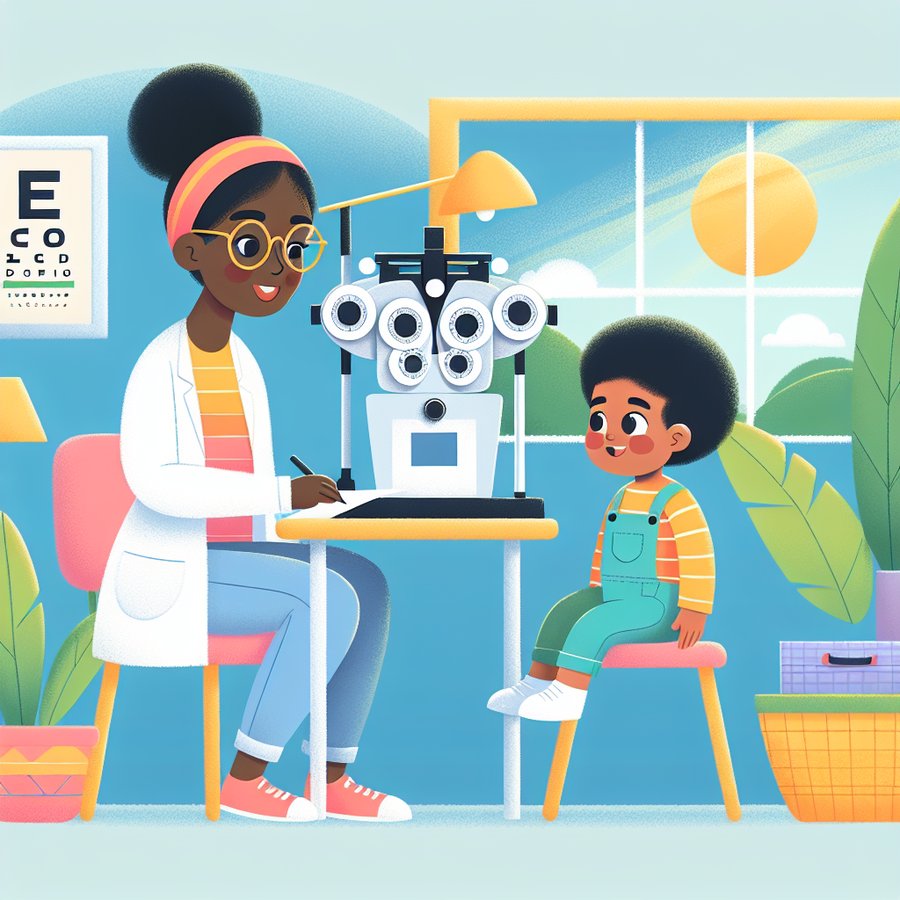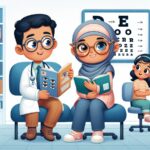Vision screening plays a critical role in ensuring your baby’s visual development is on the right track. As new parents, understanding the ins and outs of vision screening can help you ensure your baby’s eyes are healthy and developing correctly. This article will guide you through everything you need to know about vision screening, including what it is, why it’s important, when and how it is conducted, and steps to take if a potential vision problem is identified.
What is Vision Screening?
Vision screening is a simple, non-invasive procedure used to identify potential vision issues in infants and children. Unlike a comprehensive eye exam, vision screening is designed to detect early signs of vision problems that could affect a child’s visual development. It’s a crucial step in ensuring any issues are addressed promptly to support healthy vision growth.
It’s important to note that vision screening is not just about checking for clarity of vision or sharpness; it also assesses whether both eyes are working together effectively, checks for eye diseases, and evaluates the health of the external and internal parts of the eye. According to Prevent Blindness, early detection and treatment of vision issues are essential in preventing significant vision impairment or loss.
Why is Vision Screening Important for Your Baby?
Many parents wonder why vision screening is necessary for babies, especially when they seem too young to have vision problems. However, early detection of vision issues is crucial for a child’s visual development. Vision problems can significantly impact a child’s ability to learn and develop properly. Issues caught early can often be treated more effectively, leading to better outcomes for your child’s visual health.
Furthermore, certain conditions, such as strabismus (crossed eyes), amblyopia (lazy eye), or significant refractive errors (problems with how the eye bends light), can be identified and corrected if caught early. Vision screening allows for the early detection and treatment of these conditions, ensuring your child’s eyes develop as they should and preventing potential long-term vision problems.
When and How is Vision Screening Conducted?
Vision screening for babies is typically conducted at various stages of their development. The first screening often occurs shortly after birth, with additional screenings at well-child visits during infancy, toddlerhood, and school age. Pediatricians or trained health professionals usually perform these screenings using age-appropriate tests and tools designed to identify potential vision issues without requiring verbal feedback from the child.
For infants, the screening might include tests to check the pupil’s response to light, the ability to follow a moving object, and looking for any obvious abnormalities in the structure of the eyes. As children grow older, vision screening becomes more sophisticated, involving charts, images, or devices to assess visual acuity and eye health more accurately.
What to Do if a Potential Vision Problem is Identified?
If a potential vision problem is identified during a vision screening, the next step is to consult a pediatric ophthalmologist or an optometrist who specializes in children’s vision. These eye care professionals can conduct a comprehensive eye exam to diagnose the specific issue and recommend an appropriate treatment plan.
Treatments for vision problems in babies and children may include prescription glasses, patching therapy, eye drops, or in some cases, surgery. The type of treatment will depend on the nature and severity of the vision problem. Following the eye care professional’s recommendations and ensuring regular follow-up care is essential for the best possible outcome for your child’s visual health.
Supporting Your Child’s Vision Health
Supporting your child’s vision health starts with ensuring they receive regular vision screenings as recommended by your pediatrician. Additionally, being observant of your child’s visual behavior can help catch potential issues early. Signs of vision problems can include excessive tearing, frequent eye rubbing, sensitivity to light, or difficulty focusing on objects.
Encouraging activities that stimulate visual development, such as playing with colorful toys, reading together, and spending time outdoors, can also support your child’s vision health. Moreover, protecting your child’s eyes from injury and harmful UV rays by using appropriate safety gear and sunglasses is essential for maintaining good eye health.
In conclusion, vision screening is a vital part of your baby’s health care routine. By understanding what vision screening is, its importance, and how it’s conducted, you can play a proactive role in ensuring your child’s eyes are healthy and developing correctly. If you have any concerns about your child’s vision, don’t hesitate to discuss them with your pediatrician or seek an evaluation from an eye care professional.













